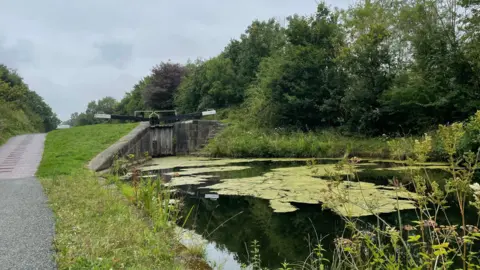 PA
PAPeople are being urged to take precautions and avoid parts of the canal network following a toxic chemical spillage in Walsall.
Sodium cyanide, which can cause seizures and vomiting, was confirmed as the leaked substance as a major incident was declared on Tuesday.
Anochrome Ltd, which deals in surface coatings and sealing, said a “chemical incident” regrettably released chemicals into the Walsall waterway during the early hours of Monday.
Which areas are affected by the sodium cyanide canal spill?
 Walsall Council
Walsall CouncilThe public have been advised to stay away from a 12-mile stretch of water and towpaths in the West Midlands.
The affected area runs from the middle of the borough to Birmingham, as well as interconnected waterways in Wednesbury, Tipton and West Bromwich.
People have been warned to avoid an extended area of the canal and towpaths from the Walsall lock flight to the lock flights at Rushall/Ryders Green and Perry Barr.
How did the spill happen?
Anochrome Ltd, a metal finishing company, said it could confirm “a chemical incident” occurred at its Walsall site during the early hours of Monday.
“Regrettably, as a result, some of the released chemicals entered a canal in Walsall,” it added.
The firm said it had immediately notified the Environment Agency (EA) and Severn Trent Water and it had made all its facilities available to the authorities, including laboratory testing areas.
“The safety of our community and the environment is our top priority. We are focused on limiting the impact of this incident and will provide further updates as they become available,” it added.
Speaking to BBC Midlands Today, the EA’s Marc Lidderth said Anochrome Ltd, which describes itself as an “environmentally aware organisation” on its website, was regulated by the EA.
He said sodium hydroxide and “possibly zinc” were also thought to have entered the canal and called the incident “unacceptable”.
The Department for Environment, Food & Rural Affairs (DEFRA) said it was monitoring the situation.
Ministers were receiving regular updates, it added.
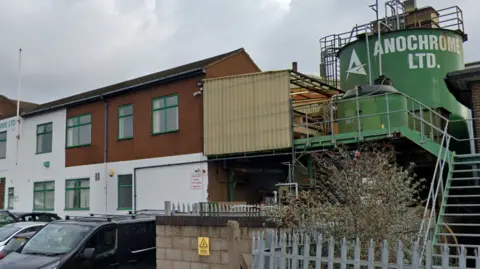 Google
GoogleWhat is sodium cyanide?
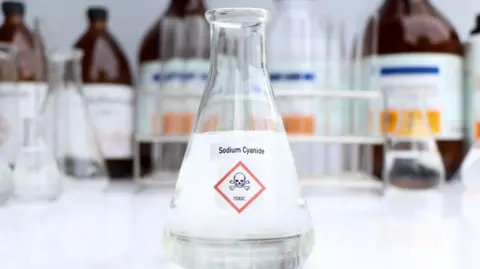 Kittisak Kaewchalun
Kittisak KaewchalunThe chemical sodium cyanide is a white, crystal-like solid with a faint almond odour.
It is used in industry for metal cleaning, plating and extraction.
When cyanide salts are ingested they release cyanide in the body – they can also be absorbed through the skin.
Symptoms may be delayed for two to four hours if ingested on a full stomach.
Exposure to cyanide can cause symptoms including headaches, nausea, dizziness, loss of consciousness, seizures, vomiting and low blood pressure.
In the most serious cases, there can be heart and breathing problems or even death.
(Source: UK Health Security Agency)
How toxic is sodium cyanide?
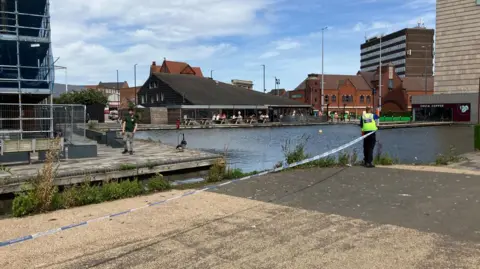
Sodium cyanide is a poisonous compound.
The chemical dissolves in water and could have serious adverse health effects if people or pets come into direct contact with it, Walsall Council said.
It can be rapidly fatal if high concentrations are inhaled or ingested as it interferes with the body’s ability to process oxygen.
There was a potential serious risk to health if people or their pets come into contact with water in the affected stretch of the canal, a spokesperson for the local authority said.
If the chemical comes into contact with the eyes, it can cause watering, pain, redness, swelling and sensitivity to light.
Both sodium and potassium cyanide can react with acid, acid salts and nitrates, the UK Health and Security Agency (UKHSA) said.
What treatment is available for sodium cyanide poisoning?
The UKHSA advises those who have health concerns regarding exposure to sodium cyanide to seek medical attention.
Children who are exposed to the chemical are likely to experience similar symptoms to those seen in exposed adults.
What is the latest guidance about the sodium cyanide spill?
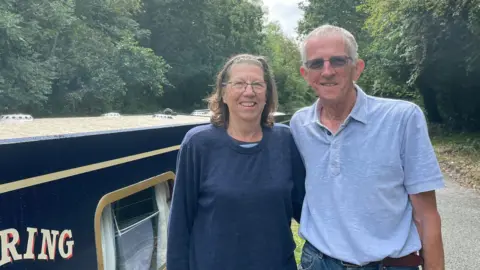
Anyone who has had direct physical contact with the stretch of water and is feeling unwell has been advised to call 111 or 999 if it is an emergency.
Multiple agencies including the West Midlands police, fire and ambulance services, the Canal and River Trust, Severn Trent Water, UKHSA, Walsall and Sandwell councils and the Environment Agency are responding to the incident.
Walsall Council’s interim director of public health, Nadia Inglis, previously said: “Our primary aim has been to keep the public safe and to protect their health and wellbeing.
“Given the nature of the substance, we’re taking a cautious approach to protecting our public until we know it’s safe to open those canal towpaths again.”
The Canal and River Trust said people living on boats on the canal in the affected area had been made aware of the spill.
In an earlier statement, Walsall Council urged those who had taken fish from the canal not to eat it.
Drinking water was not affected by this incident, it added.
Council leader Gary Perry said on Tuesday it was too early to speculate how the substance had entered the waterway but promised regular updates.
“Our priority is the safety of our residents. I share their concerns and hope to see this incident resolved as soon as possible,” he added.
“For your own safety please avoid this area of the canal and its towpaths.”
How has the chemical spill affected the environment?

A number of dead fish have been spotted in the canal following the spill.
Dr Delia Garratt, chief executive of Birmingham and Black Country Wildlife Trust, said they were “extremely concerned” and that the spillage would have a “devastating impact” on wildlife.
“Environmental watchdogs must be empowered and sufficiently resourced to ensure they can monitor and inspect polluters, and enforce penalties upon those who break the law,” she said.
“We hope that whoever is responsible for this damaging and dangerous spill within Walsall’s canals will face the full force of the law in due course”.

